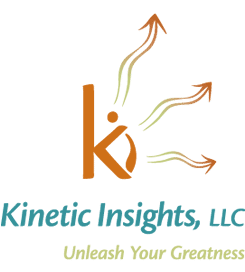Emotional intelligence is not the cake, or even the icing on the cake: it’s the veggies of leadership.
A decade ago, emotional intelligence was newly recognized as a characteristic of effective leaders. Today we know that EI is not only important, but it is also the very thing that distinguishes great leaders from the rest of the pack, especially at the highest organizational levels. (On Emotional Intelligence, Harvard Business Review Press, 2015, p.3.)
Although EI seems intangible, specific EI competencies have been defined, and as you consider them, it becomes immediately apparent how EI taps into something that is distinct from IQ – something that helps us manage our moods and prevents individual emotions from driving business behavior and decisions. EI enables our ability to perceive the reactions of others and sense the mood of the room, allowing us to manage conflicts, facilitate collaboration, navigate sensitive situations, and communicate in a way that others can ‘hear.’ These capabilities have a lot to do with getting results.
If you want to learn more about EI competencies, here are a few resources where you get it straight from the experts.
- Emotional Intelligence Has 12 Elements. Which Do You Need to Work On? Daniel Goleman and Richard E. Boyatzis. Harvard Business Review; Feb 06, 2017.
- Primal Leadership: Unleashing the Power of Emotional Intelligence. Daniel Goleman, Richard Boyatzis, Annie McKee. Harvard Review Press, 2013. Pp. 35 – 36, 253 – 256.
- Resonant Leadership. Richard Boyatzis, Annie McKee. Harvard Business School Press, 2005. Pp. 28 – 29.
Resonant Leadership and Primal Leadership are so relevant to leading others that you may want to read them in entirety.
Emotional intelligence is the sine qua non of leadership: EI is to leadership what veggies are to a healthy diet. Without EI leadership is impossible.
‘Primal leadership,’ coined by Daniel Goleman and others (Primal Leadership: Daniel Goleman, Richard Boyatzis, Annie McKee, Harvard Business Review Press, 2013) argues that the ‘prime’ work of leaders (original and most important) is to stimulate and sustain the good feelings of those they lead to get them to move with you. Getting people to move with you requires generating optimism, energy, and willingness: resonance. Think of resonance as harmony of emotion and action within and among: “a powerful collective energy that reverberates among people and supports higher productivity, creativity, a sense of unity, a sense of purpose, and better results,” (Becoming a Resonant Leader, McKee, Boyatzis, Johnston, Harvard Business Press, 2008, pp. 39-40.)
Getting started: Actions to develop emotionally intelligent leaders, teams, and organizations
Build resonance within yourself.
Be clear about your aspirations, your real self, your strengths, and your shortcomings. Connect with yourself in a way that brings out your best qualities and builds physical and psychological resilience. ‘Actions speak louder than words’ is at play here, so congruence of your words and actions is essential for credibility.
Build resonance with people around you.
Be deliberate about collaboratively defining how you will lead, partner, and team with those around you and be intentional about doing it. Check-in, ask for feedback, and revisit when situations change. Put as much energy in how you’ll work together as you do in your plan, goals, processes.
Pay attention to the subjective elements of the organization.
In addition to the objective goals and metrics, attend to values, emotions, and relationships – the emotional reality – and its impact on performance.
Build resonance throughout the entire social system.
The emotional reality of an organization is complex and interdependent: each group influences the individual and each group influences the progressively larger groups. Change occurs when multiple levels are affected in a similar manner and timeframe. Plan to fully implement practices that generate an atmosphere of ‘harmony of emotion and actions’ across a critical mass of the organization.(Source: Becoming a Resonant Leader, McKee, Boyatzis, Johnston. Harvard Business Press, 151-193.)
Emotional Intelligence is the vehicle of primal leadership.
leaders who constructively engage emotion to move people with them. EI enables leaders to inspire, motivate and mobilize. They are the leaders who release talent and creativity, building resilience toward productive outcomes.
At Kinetic Insights, our PathFinders are skilled in helping leaders unleash the greatness in themselves and in their organizations. Call or email us for a quick discussion that just might put you and your team on the path to significant change.
Kristi Thompson, a seasoned professional with more than 25 years experience, devotes herself to aligning people and processes to meet strategic goals with direct impact on an organization’s bottom line..











Leave A Comment